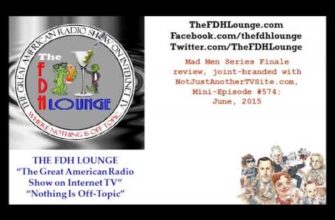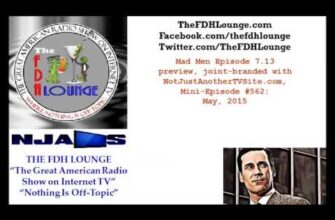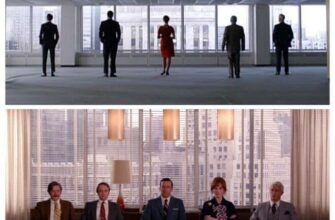Warning: Mild Spoiler Alert
Throughout its 6 ½ seasons, Mad Men has been about many things. It has been about the ongoing existential crisis of its lead character, Don Draper. It has been an examination of the changes in the workplace in the 1960s through the eyes of its “secondary lead,” Peggy Olson. It has been about the advertising world at the end of its vaunted “boys will be boys” era of debauchery in the workplace. And it has been about the Sixties on a large scale, the most transformative decade – in at least a sociological sense – in American history.
Borrowing from the successful Breaking Bad formula, AMC decided to have the other great Founding Father of its scripted division broken into two halves for the final “season.” As such, it’s Season 7, Part 2 that begins on Sunday, April 5. But unlike Breaking Bad – the super-focused story of one man’s journey to the dark side – Mad Men doesn’t have nearly the amount of loose ends to tie up after their midseason finale. Now, that’s not to say that more closure can’t be provided to the ensemble and that new questions won’t be asked and answered before the series finale. But Breaking Bad left off on a huge cliffhanger going into the end and it had a very clear direction to the finish line. Characteristic of a show that sometimes seems to mirror the decade’s psychedelic music in structure, answers are in very short supply about the developments that will wrap up this epic series. And that’s just how showrunner Matthew Weiner wants it.
While the Sterling, Cooper and Partners agency is being captained by Roger Sterling (played by the outstanding John Slattery) in the wake of the sale to McCann Erickson in the midseason finale, the real creative – and polarizing force in the agency is Don (played by Jon Hamm). His run to the end of the series will involve working with others in creative, including his protégé Peggy (played by Elizabeth Moss), fellow partner Ted Chaough (played by Kevin Rahm) and stick-in-the-mud Lou Avery (played by Allan Havey). The top salesmen interacting with creative include the maturing-but-still-occasionally-immature Pete Campbell (played by Vincent Kartheiser) and pirate-patch-wearing Ken Cosgrove (played by Aaron Staton). Others adding flair to the office include pompous TV division head Harry Crane (played by Rich Sommer), office minx Joan Harris (played by Christina Hendricks), far-out art guy Stan Rizzo (played by Jay R. Ferguson), and big fat jerk Jim Cutler (played by Harry Hamlin). Don’s family ties play into the show as well, with ex-wives Betty Francis (played by January Jones) and Megan Draper (played by Jessica Pare) on the fringes of the main action, along with Don’s children Sally (played by Kiernan Shipka), Bobby (played by Mason Vale Cotton) and Gene (played by Evan Londo). Betty’s husband Henry (played by Christopher Stanley) is a rising star in the Nelson Rockefeller machine.
Most of the characters have become happy and satisfied on a professional level by this point, but almost all of them are yearning for unfulfilled personal happiness as well and the best bet is that the remaining seven episodes will address these journeys in great detail. Characteristically, Weiner has played coy about all details of the show, so the longtime theory that the show will wrap up at the end of 1969 remains theoretically in play – even though the last episode touched on the immediate aftermath of the July 1969 moon landing. This would leave no space for Weiner to insert the “time jumps” that he loves to insert between seasons, so it seems likely that the show will touch on the early days of the Seventies as well.
We will be featuring weekly audio commentaries on the show, analyzing the biggest developments from the previous episode, as well as our weekly recap columns. As a taste of that, here is our audio preview for the final seven episodes.








